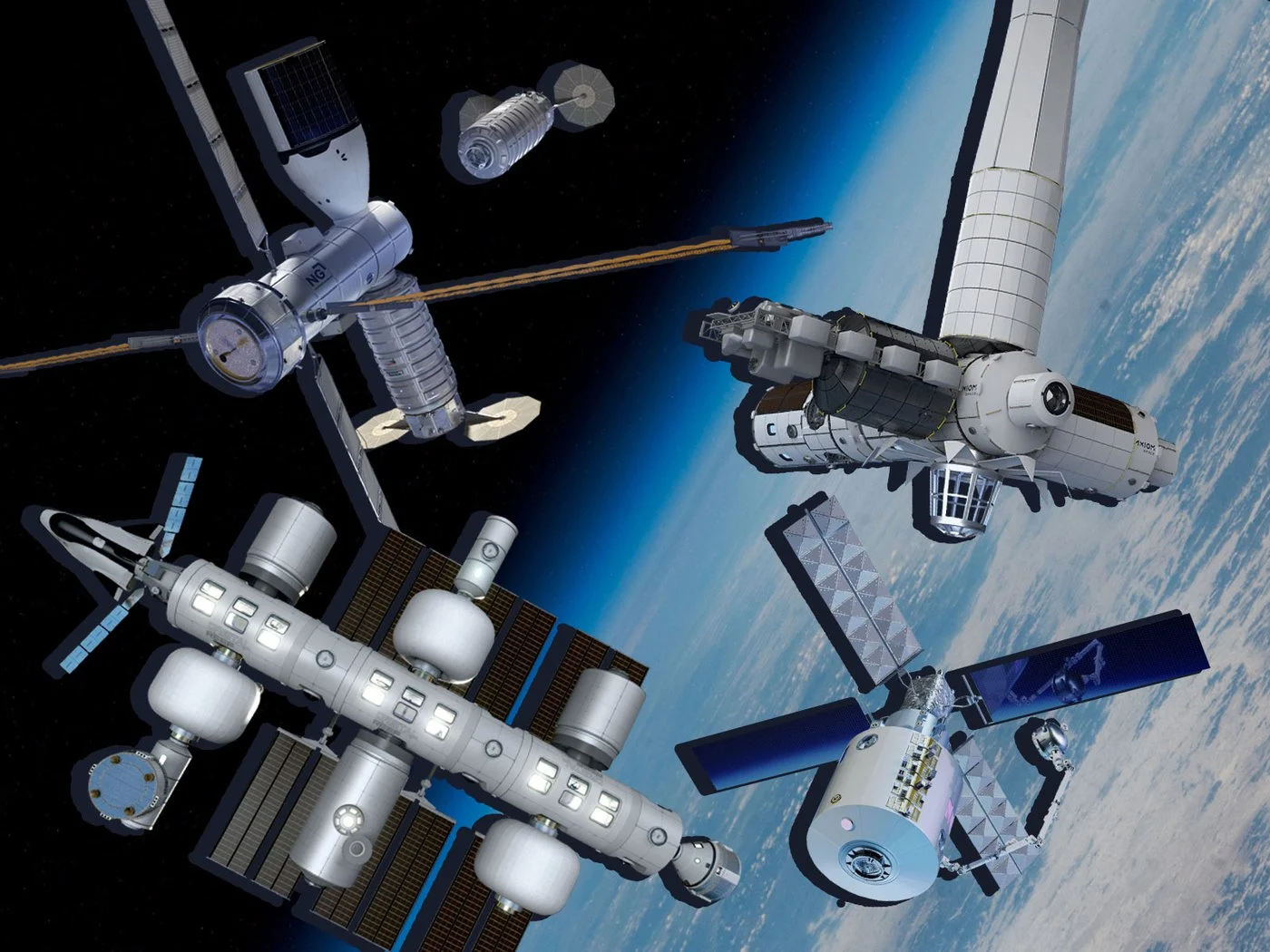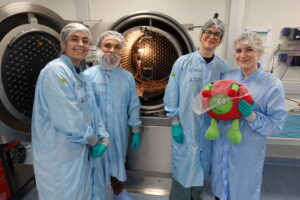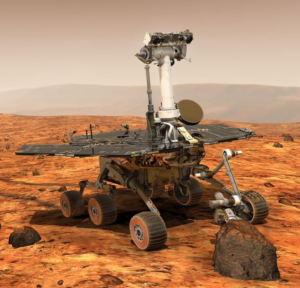The International Space Station has been around for almost 25 years, but it is not going to last forever. Since the beginning, it was meant to last until 2020 but then its life has been extended to 2030, basically because it is not easy to replace one of the greatest human constructions. The ISS travels over our heads at an astonishing speed of 27 600 km/h which is required to keep its orbit at an altitude of 413 ÷ 422 km AMSL. It is 109 m long, 73 m wide and it weighs around 450 000 kg; definitely a big guy. But the most incredible number related to the space station is 150 followed by nine zeros, it looks like this if you are wondering: 150 000 000 000 …
… US Dollars.
Yes, the International Space Station, and its full name is here required, it is the most expensive single item ever built. Five the main actors in its realization: NASA (mainly), ESA, ROSCOSMOS, CSA and JAXA, they have contributed with different modules since 1998 and kept improving it with 40 missions in the last decades.
You may wonder, why the hell humankind would need a sort of austere, but still incredibly pricey tin can floating over the Earth. The main purpose of the ISS, differently from its replacement as we will see, is scientific. During its life, it has been equipped with many experimental facilities to perform the most diverse experiments. From biology to dark matter studies, from microgravity tests to remote sensing of Earth.
The main advantages of carrying the experiments on a LEO lab are the permanent exposure to space and the constant microgravity (much more comfortable than being rocked on a B-727 to obtain just an approximation of it). Microgravity is such a unique and highly demanded condition that the astronauts are always performing some experiment, with such strict timetables that could even challenge Santa Claus, a man able to deliver gifts all over the world in just one night. (Just to let you know, in that time the ISS orbits around our planet 15.48 times, since its orbit period is 92.9 min).
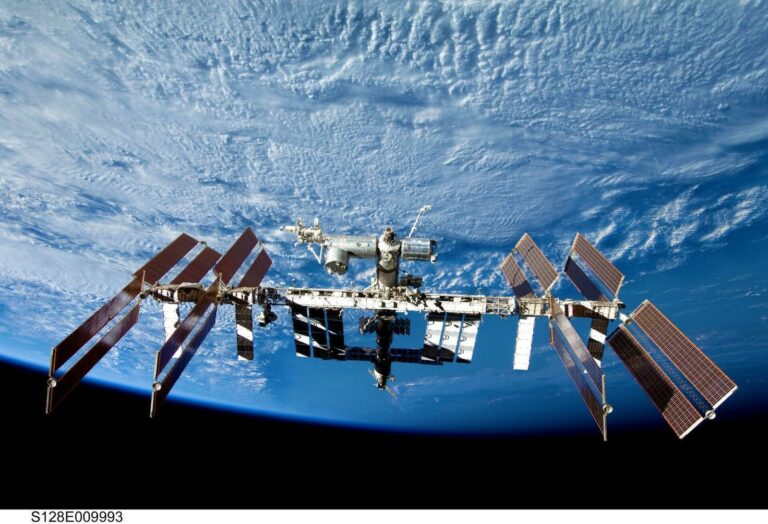
So, why are we replacing an incredible object like the ISS?
As for any other spacecraft, the exposure to temperature changes due to the swinging in and out of the view of the Sun, the impact with small space debris and the effect of space radiations has led to cracks and air leakages, the latter mainly in the Russian module Zarya, one of the oldest of the assembly.
Talking about Russia, Jurij Borisov, CEO of Roscosmos, has declared that Russia will quit the ISS program at the end of 2024, once the previous agreements expire. This is probably due to the current geopolitical situation and leads to a major problem: the propulsion of the ISS, necessary to restore the orbit and avoid space debris, is mainly provided by a Russian module, so without Roscosmos the space station will be in danger.
What will replace the ISS?
Developing a new space station would have been too expensive and, with the Artemis Mission in progress and the mission to Mars at the horizon, it would not have been possible. That is why NASA decided to exploit the growing market of private space missions, funding four companies to develop their own vision of the new space station. Axiom Space, Northrop Grumman, Blue Origin and Voyager Space-Nanoracks all have been funded but only one will win. So why take such a big risk? The four projects are quite different, but still there is one common point; all the companies envision a future in which there will be many private space stations, each of them with their own clients and purposes. Space tourists and working crews will cohabit in the same environment, hopefully, without interfering.
Axiom’s space station
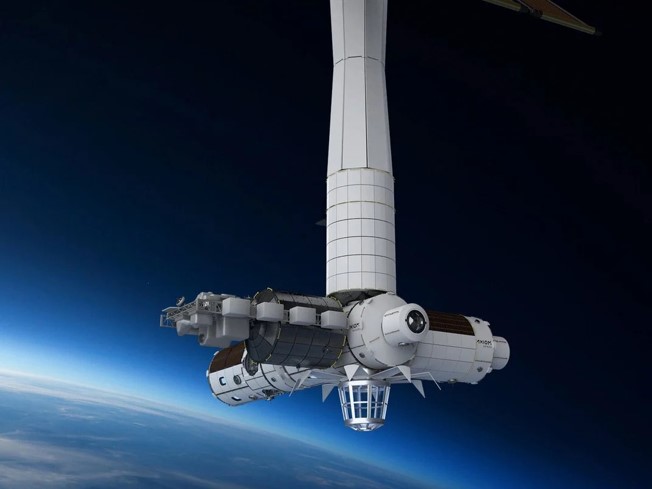
Axiom stated that its module will be ready as soon as 2025, so it will be the first to leave the ground. In the beginning, the first module and the following three will dock the ISS absorbing power from it until the full assembly will be completed. At this point, the new station will leave the ISS to its destiny. The first two modules will feature the crew accommodations, up to 4 people each, then the third will present the communication system and the fourth a research and manufacturing facility. This last differentiates Axiom’s station from the International Space Station since it enlightens the commercial nature of the facility. Manufacturing goods in space may produce many advantages. For example, microgravity allows a better alignment in the crystal structure of metal alloys, since they are not influenced by gravity, and this produces much stronger material.
Another interesting feature, that differentiates this new station, is its capability to combine CO2 exalted from the crew with hydrogen from water to produce methane usable as propellant for maneuvering.
Northrop Grumman space station
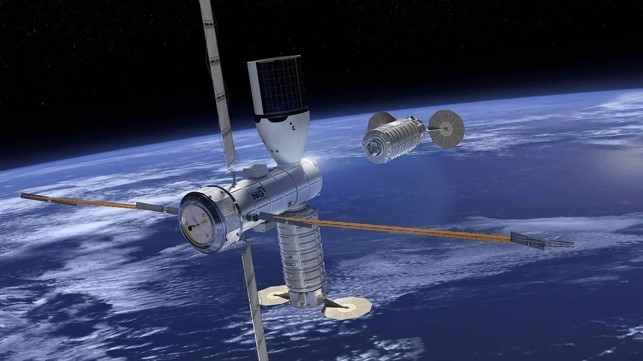
The well-known company has chosen to follow the old saying if something works, do not change it. Northrop is already developing the Habitation And Logistic Outpost (HALO) for the Moon orbiting base commissioned by NASA and will furtherly adjust this project for the new Earth’s space station. They will launch the first module in 2028/29 and they will eventually add some more modules if the market demand will require it. A very conservative approach we could say.
Blue Origin’s Orbital Reef
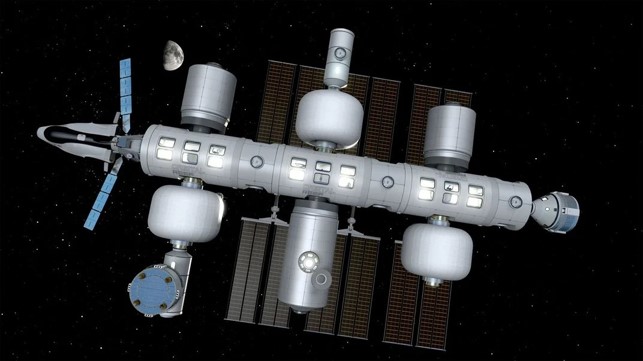
Blue Origin immediately reminds us of the name of Jeff Bezos the King Midas of private companies, the owner of one of the too big to fail. Aiming primarily to the commercial market and with the help of a great M&C department, they called their space station Orbital Reef which recalls the beautiful coral reef and a place where everyone would love to spend their holidays.
The Orbital Reef features a main mast and many side modules thought to fit any possible market demand. The central module will work as a lobby and dining room and it will provide communication, propulsion and energy to all the docked modules. Work areas and restrooms will be sharply defined so that tourists will enjoy their stay and the working crew will work in peace.
Starlab From Voyager Space and Nanoracks
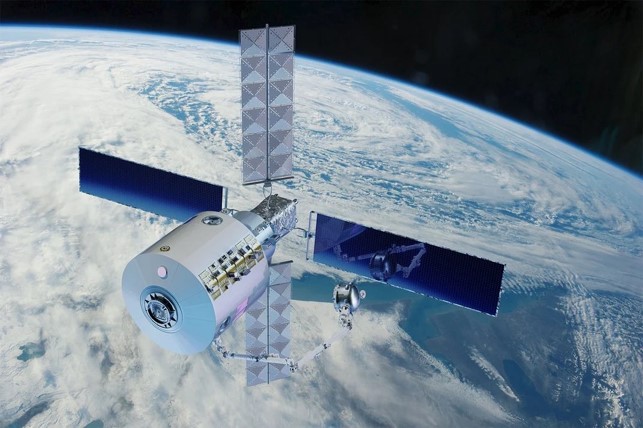
Differently from all the other companies, NanoRacks and Voyager Space will not develop a modular space station, but instead they will deliver a fully autonomous module that will include a habitat, docking node, propulsion system, robotic arm and solar panels and will satisfy all the necessities of a crew of four. Jeffrey Manber, CEO of NanoRacks, said that their station will be able to dock one extra module to satisfy particular client’s requests, but more likely he envisions a future in which there will be many private stations, each with a specific market.
Starlab uses an inflatable habitat with a pressurized volume of about 1/3 of the ISS’s volume, this will lead to much more flexibility since it will be possible to release in orbit an autonomous station with just one launcher, instead of performing many consequential launches.
Where are we going?
NASA is pushing towards a private space economy, leaving to private operators the now usual Low Orbit Space Missions, so as to redirect most of their funds to more complex and prestigious missions. According to Rick Mastracchio, director of business development for Northrop Grumman, “building the space station is really pretty easy to us” but the hard part will be to compete with other operators in the market ensuring enough cake to everyone in order not only to sustain the business, but also to make profitable to keep a western presence in Earth’s low orbit.
With the Eastern part of the world already working on this, China, Russia and India are already developing their space stations, Westerns need to hurry up in order to keep their presence in orbit.
The new space era is coming and none wants to miss the opportunity of being in a market with such great potential. Thrilling things are going to happen.

